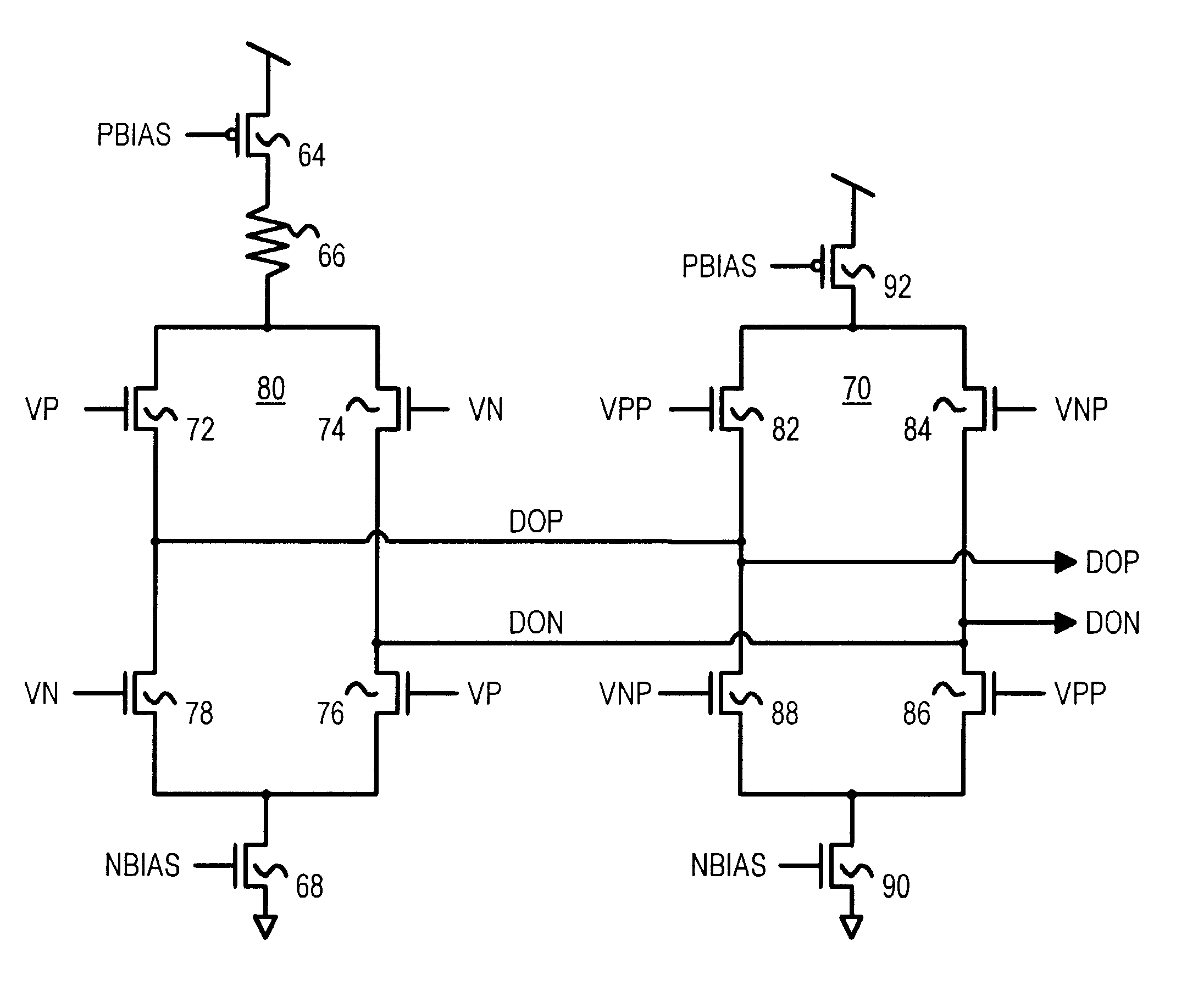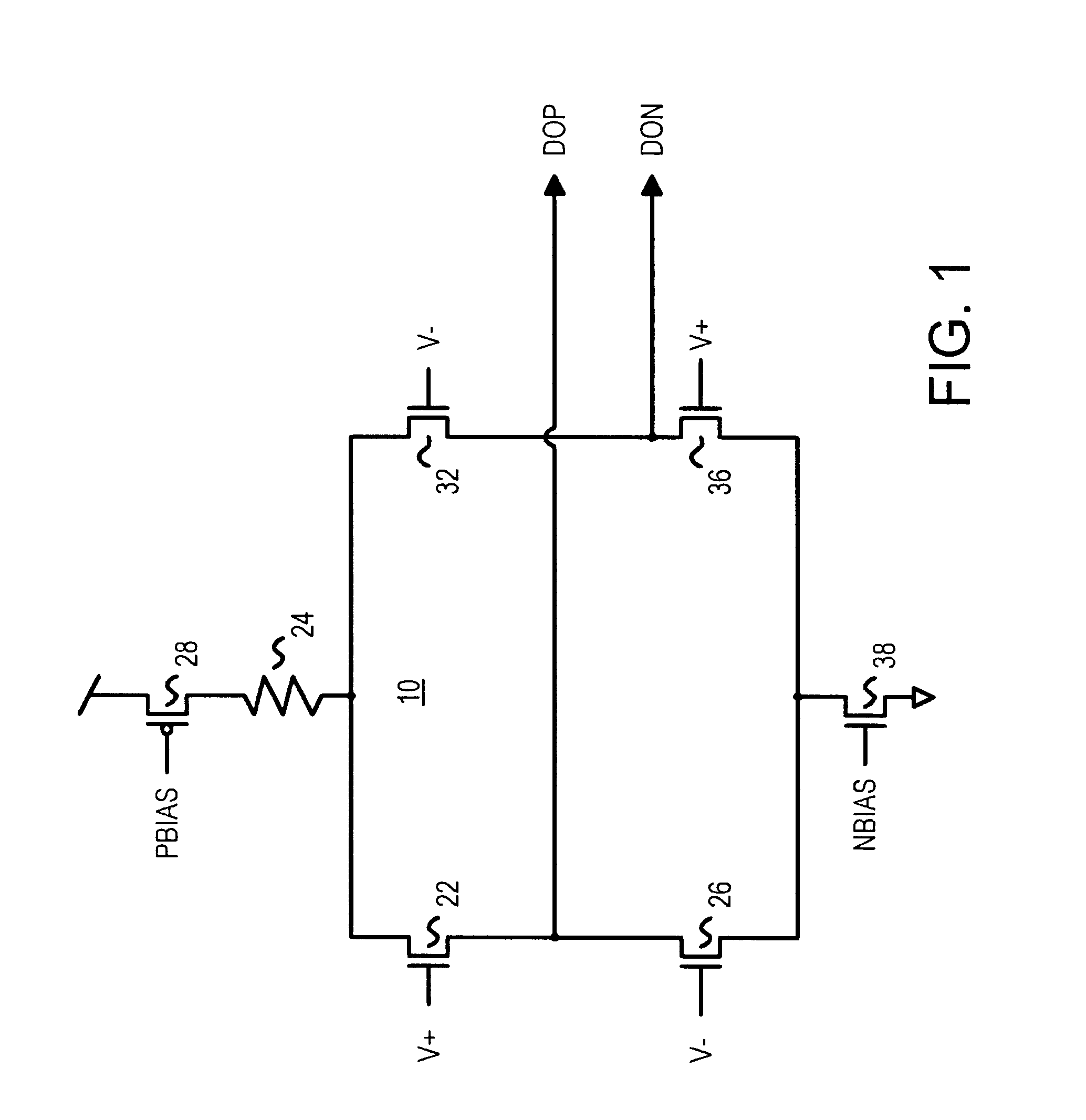Low-voltage differential driver with opened eye pattern
a low-voltage differential and eye pattern technology, applied in logic circuit coupling/interface arrangement, pulse technique, baseband system details, etc., can solve problems such as distortion, reducing the opening of eye pattern, and limiting performance of external signaling
- Summary
- Abstract
- Description
- Claims
- Application Information
AI Technical Summary
Problems solved by technology
Method used
Image
Examples
Embodiment Construction
Several other embodiments are contemplated by the inventors. For example, different transistor sizes and biases can be used to obtain desired currents in the two stages. The load resistance may be chosen by the system designer from a range of values. Additional devices such as capacitors can be added, and various parasitic resistances and capacitances may exist but are not shown. The pre-driver and pulse generator can be constructed in many variations, such as using NAND gates and signal inversion rather than NOR gates. Positive logic gates may be used, such as an OR gate constructed from a NOR gate and an inverter as is commonly available from standard-cell libraries. More complex multi-input gates can also be employed.
The output buffer may be disabled by driving both V+, V- or VP, VN low.
Additional gates can be provided to drive these signals low during a power-down or high-impedance mode. The source resistor can be located in series, above or below, the p-channel current-source t...
PUM
 Login to View More
Login to View More Abstract
Description
Claims
Application Information
 Login to View More
Login to View More - R&D
- Intellectual Property
- Life Sciences
- Materials
- Tech Scout
- Unparalleled Data Quality
- Higher Quality Content
- 60% Fewer Hallucinations
Browse by: Latest US Patents, China's latest patents, Technical Efficacy Thesaurus, Application Domain, Technology Topic, Popular Technical Reports.
© 2025 PatSnap. All rights reserved.Legal|Privacy policy|Modern Slavery Act Transparency Statement|Sitemap|About US| Contact US: help@patsnap.com



